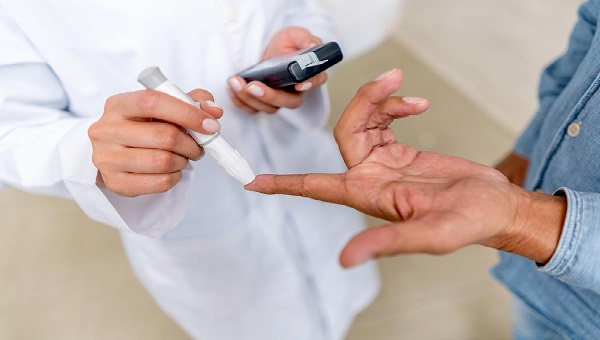Chennai Mar 23:

The International Diabetes Federation (IDF) has released a Position Statement that presents the 1-hour post-load plasma glucose (1-h PG) test as a more sensitive and practical method to screen for intermediate hyperglycaemia (IH), (earlier known as Pre-Diabetes) and type 2 diabetes(T2D) in people at risk. The Statement was prepared by an international panel of 22 experts from 15 countries and presented recently at the 17th International Conference on Advanced Technologies & Treatments for Diabetes (ATTD) in Florence, Italy and was published online in Diabetes Research and Clinical Practice. Dr. V. Mohan, Chairman, Madras Diabetes Research Foundation and Dr.Mohan;s Diabetes Specialities Centre represented India on this panel. The Statement recommends the use of 1-h PG with the validated cut points of 155 mg/dL (8.6 mmol/L) for IH and 209 mg/dL (11.6 mmol/L) for T2D.
IH, earlier referred to as “prediabetes,” is a state between normal glucose regulation (NGR) and T2D. It includes impaired fasting glycaemia (IFG) and impaired glucose tolerance (IGT). Many individuals with IH as defined by current diagnostic criteria, will progress to T2D. Evidence shows that T2D can be preventedby lifestyle modification and/or medications in people with IGT diagnosed by 2-h PG during a 75-gram oral glucose tolerance test (OGTT). Unfortunately, many people with T2D and those with IGT remain undiagnosed if an OGTT is not employed. Given the continued rising prevalence of diabetes worldwide, a more sensitive and practical method is therefore needed to detect people with IH and T2D for early diagnosis and intervention.
A wealth of epidemiological data has confirmed the superior value of 1-h PG over fasting PG (FPG), glycated haemoglobin (HbA 1c) and 2-h PG in populations of different ethnicity, sex and age. The IDF Position Statement reviews findings that the 1-h post-load PG> 155 mg/dL (8.6 mmol/L) in those with NGR during an OGTT is highly predictive for detecting people at risk of progression to T2D, micro- and macrovascular complications, obstructive sleep apnoea, cystic fibrosis-related diabetes, metabolic dysfunction-associated steatotic liver disease, and premature death. Importantly, by using the 1-h PG cut points of .155 mg/dL (8.6 mmol/L) for diagnosing IH and 209 mg/dL (11.6 mmol/L) for diagnosing T2D, people at risk can be detected earlier than with the currently recommended glycaemic thresholds. Therefore, the IDF Position Statement recommends the adoption of 1-h PG with the aforementioned cut points.

Presenting the Position Statement at ATTD, Professor Michael Bergman, who co-chaired the Expert Panel with Professor Jaakko Tuomilehto, said,”There are many people whowould not be diagnosed through an HbA1c or FPG test but who would, if given an OGTT, be more likely to be detected as having IH or T2D. The 1-h PG has been found to be a more sensitive biomarker for the earlier identification of these high-risk individuals.”
The IDF Position Statement proposes the following pathway for detecting IH (Pre-diabetes) and T2D.
People determined to be at high-risk for T2D through a validated screening tool (e.g. Finnish FINDRISC, ADA risk score) should undergo a 75-gram 1-h OGTT after an overnight fast.
People with a1-hPG value at or above 155 mg/dL (8.6mmol/L) are considered to have IH and should be prescribed lifestyle intervention and referred to a diabetes prevention programme.
People with a1-hPG value at or above 209 mg/dL (11.6 mmol/L) are considered to have T2D. They should have a repeat test to confirm the diagnosis and then be referred for further evaluation and treatment.
Dr. V. Mohan, Chairman, Madras Diabetes Research Foundation and Dr. Mohan’s Diabetes Specialities Centre added, “Years ago, the original OGTT test was a 5-sample test and comprised of fasting, 30, 60, 90 and120 mins. Later, this was modified to just fasting and 2 hr sample. However, we have always advocated the continuation of the 1 hr test during the OGTT, as a raised 1 hr value in those with normal fasting and 2 hr glucose values is predictive of future diabetes. Our own follow up studies have clearly shown this, and I am very happy that our Indian data was included in this IDF Position Statement. My recommendation to all labs and Diabetes and Endocrine centres is to include the 1 hr value along with the fasting and 2 hr value when doing an OGTT as it will identify an earlier stage, in the natural history of diabetes at which stage reversal or remission of diabetes is much easier”.
The expert panel was co-chaired by Professor Michael Bergman, Professor of Medicine and Population Health at New York University Grossman School of Medicine, New York City and Professor Jaakko Tuomilehto, Professor Emeritus of Public Health, University of Helsinki, Finland, and Visiting Scientist, Finnish Institute for Health and Welfare, Helsinki, Finland. Leadership and support for this initiative was provided by Professor Akhtar Hussain, President of the International Diabetes Federation, Professor (Diabetes & Metabolic Disorder) NORD University, Boda, Norway and Professor Antonio Ceriello IRCCS MultiMedica, Milan, Italy.








